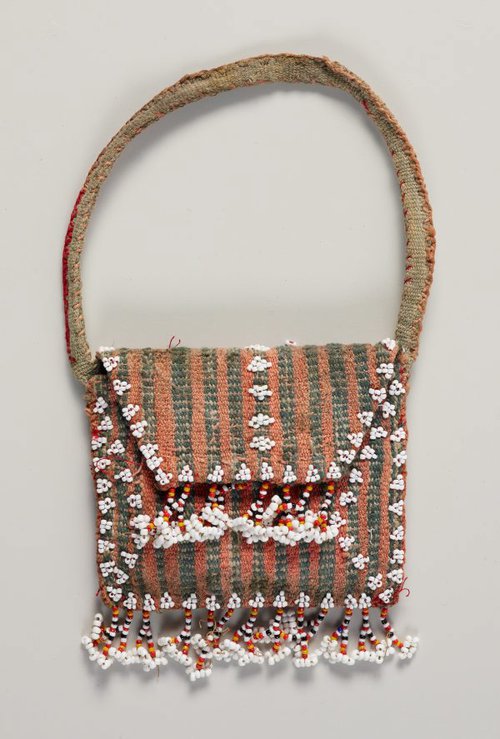-
Details
- Place where the work was made
-
Central Cordillera
→
Luzon
→
Philippines
- Cultural origin
- Ga'dang
- Date
- 20th century
- Media category
- Textile
- Materials used
- cotton twill, beading
- Dimensions
- 12.3 x 252.0 cm (irreg.)
- Credit
- Gift of Dr John Yu and Dr George Soutter 2005
- Location
- Not on display
- Accession number
- 204.2005
- Copyright
- Artist information
-
Ga'dang
Works in the collection
- Share
-
-
About
The mountainous region of Central Cordillera in northern Luzon is home to a large number of indigenous communities. Their fierce self-determination and geographic isolation provided relative protection from the cultural influences of Spanish colonisation. However, their art did not remain unchanged. Communities retained forms which were useful and meaningful, abandoned others and created new forms to meet new purposes – a tradition that has continued into 21st century.
In Central Cordillera art is part of everyday life and is intrinsically linked to community and spiritual wellbeing. Many villages are built around a central stone platform where social and spiritual rites are performed. These include the worship of deities and ancestors and the consecration of sculptural figures.
The carving of ancestral and religious figures, while today most prevalent among Ifugao men, was previously a practise shared by all communities of the Central Cordilleran mountain range. Textiles, on the other hand, are woven exclusively by women using backstrap looms. There has been a long and active trade in locally woven products, so many communities share techniques and an appreciation for similar motifs and colour schemes.
The basic dress for men across the Cordillera region consists of a loincloth that is sometimes complemented with a jacket. The loincloth is usually threaded once through the legs and wrapped around the waist, where it is gathered and folded to leave a section of the beaded decoration visible at the front and back of the wearer.
The aesthetic of Ga’dang clothing is very similar to that of their neighbours the Kalinga and displays the same tendency to decorate with imported beads, buttons, coins and shells. The loincloth of Ga’dang men is very similar in appearance to the sashes worn by women, although the loincloths have tassels at only one end and an extended section of beadwork at the other. The red and indigo-coloured stripes of this cloth may have faded over time, but the black, white and yellow beadwork and tassels are a striking reminder of the vibrant Central Cordilleran textile traditions and their dynamic incorporation of foreign materials.
-
Provenance
John Yu, 1970s-2005, Sydney/New South Wales/Australia, purchased mid-1970s from an antique shop on Mabini st., Manila, Philippines. Donated to the Art Gallery of New South Wales, Sydney, 2005.




